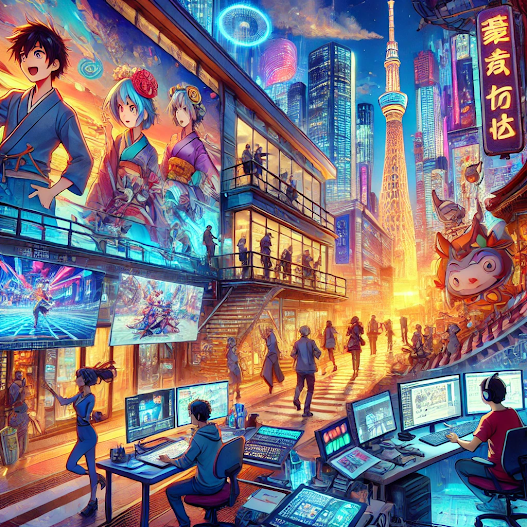Navigating Career Paths: Indian Animators in the Japanese Anime Industry
The Japanese anime industry, a titan in the realm of global entertainment, beckons animators worldwide with its unique style and storytelling depth. Indian animators are increasingly eyeing this vibrant sector, drawn by its creativity and expansive reach. Here’s a roadmap to understanding and entering the anime industry in Japan, along with key challenges and opportunities.
Understanding the Japanese Anime Industry
Japan’s anime industry is a formidable segment of its cultural exports, characterized by a rich palette of genres and an insatiable appetite for innovation. This industry isn't just about mainstream TV series or blockbuster films; it encompasses a wide spectrum of media including web series and OVAs (Original Video Animations), each offering unique opportunities for creative expression and technical expertise.
Essential Skills and Training
Breaking into the Japanese anime industry requires more than just basic animation skills. Animators must master a specific set of abilities tailored to the unique demands of anime production:
- Artistic Precision: The distinct visual style of anime demands high precision and attention to detail in character design and background settings.
- Animation Software Proficiency: Knowledge of industry-standard software like Toon Boom, Adobe Animate, or TVPaint is crucial. Additionally, familiarity with CelAnimation and digital painting tools can provide a competitive edge.
- Storytelling: Since anime is deeply narrative-driven, understanding the nuances of storytelling, including pacing, character development, and cultural subtleties, is essential.
Pathways to Enter the Industry
The journey to becoming a part of the anime world involves several strategic steps:
- Education and Training: Enrolling in specialized animation training programs that focus on the techniques and styles specific to anime is a great start. Institutes that offer courses in manga and anime production are particularly beneficial.
- Networking: Building a network through freelancing on anime projects or attending industry conferences can open doors. Platforms like LinkedIn and professional forums dedicated to animation can also be invaluable.
- Portfolio Development: A strong portfolio that showcases an understanding of anime style and storytelling can attract the attention of Japanese studios.
Challenges and Considerations
While the opportunities are plentiful, several challenges could impact Indian animators aspiring to enter the Japanese market:
- Cultural and Language Barriers: Navigating a new cultural landscape and mastering Japanese can be daunting but is often essential for success in this industry.
- Work Ethic and Practices: The Japanese work culture is notoriously demanding, with long hours and high expectations of professionalism and dedication.
- Adaptation to Industry Standards: Understanding and adapting to the fast-paced and precision-oriented work environment of Japanese anime studios is crucial.
Conclusion
The path for Indian animators into the Japanese anime industry is fraught with challenges but also rich with opportunity. With the right skills, mindset, and understanding, Indian talent can indeed make a significant impact on this dynamic and ever-evolving industry, turning artistic dreams into animated realities.



Comments
Post a Comment